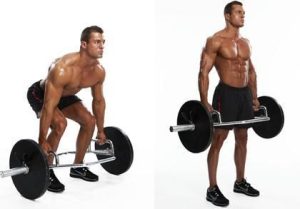
Powerlifting is a demanding sport that requires strength, technique, and precision. Whether you are a beginner or an experienced lifter, it’s important to be aware of common mistakes that can hinder your progress and increase the risk of injury. In this article, we will highlight some common powerlifting mistakes and provide tips on how to avoid them, enabling you to maximize your performance and stay safe in the gym.
1. Neglecting Proper Warm-Up
A common mistake many powerlifters make is skipping or rushing through their warm-up routine. Warming up not only increases blood flow and loosens up the muscles but also enhances your performance and reduces the risk of injuries. Dedicate sufficient time to dynamic stretching, mobility exercises, and light sets of the main lifts to prepare your body for the heavy work ahead.
2. Poor Technique and Form
One of the most critical aspects of powerlifting is employing proper technique and form during lifts. Lifting with incorrect form not only diminishes the effectiveness of the exercise but also leaves you susceptible to injuries. Seek guidance from experienced lifters or consider working with a knowledgeable coach to ensure you are using the correct form for each lift. Focus on maintaining a neutral spine, engaging the right muscles, and executing the full range of motion.
3. Ignoring Individual Weaknesses
Every lifter has their strengths and weaknesses. Ignoring your weak areas can result in plateauing progress and potentially developing muscle imbalances. Identify and address your weaknesses by incorporating accessory exercises that target those specific areas into your training routine. This will help you develop evenly balanced strength and prevent potential injuries.
4. Overtraining and Insufficient Recovery
While determination and consistency are crucial in powerlifting, overtraining can have adverse effects on your progress. Overloading your body without proper rest and recovery can lead to burnout, decreased performance, and even injuries. Pay attention to your body’s signals and incorporate rest days into your training program. Prioritize quality sleep, nutrition, and practices like foam rolling and stretching to promote optimal recovery.
5. Lack of Progression and Variation
Plateauing in your progress can be discouraging. Often, it’s the result of a lack of proper programming, progression, and variation in your training. To avoid stalling, make sure your training plan includes progressive overload by gradually increasing weights or intensity. Additionally, don’t be afraid to introduce new exercises or training techniques to challenge your muscles and keep your workouts exciting.
6. Neglecting Mobility and Flexibility
Many powerlifters focus solely on strength and often forget about the importance of mobility and flexibility. Insufficient mobility can limit your range of motion, hindering your performance and making you more susceptible to injuries. Incorporate stretching exercises and mobility drills into your warm-up and cooldown routines to enhance your overall movement capacity.
7. Incorrect Breathing Technique
Breathing technique is often overlooked in powerlifting, but it plays a vital role in maintaining stability and generating power. Improper breathing can result in loss of strength and compromised form during lifts. Practice the valsalva maneuver, which involves taking a deep breath before initiating the lift and holding it until completion. This technique helps brace your core, protect your spine, and generate maximum force.
8. Ego Lifting
Ego lifting refers to attempting loads that are beyond your capability for the sake of impressing others or proving something to yourself. This not only increases the risk of injury but also hinders your progress. Focus on proper programming, gradually increasing weights with proper form, and listening to your body’s capabilities. Progress will come naturally without compromising your safety.
Conclusion
By avoiding these common powerlifting mistakes, you can optimize your training, enhance your performance, and reduce the risk of injuries. Prioritize proper warm-up, technique, recovery, and progression in your training routine. Address individual weaknesses, incorporate mobility work, and avoid ego lifting. With consistency, dedication, and a focus on continuous improvement, you’ll be on your way to achieving your powerlifting goals.

